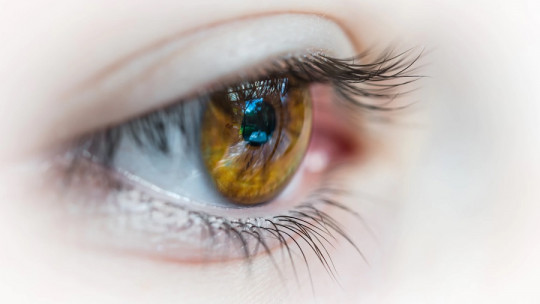In everyday life, and without realizing it, we experience a very specific natural process of the mind; for example, when we are absorbed in watching a movie or reading a book, or when we are driving thinking about our things without being aware of the journey we are taking.
These states have a lot to do with hypnosis. This is in turn a technique that is increasingly used in clinical psychology to treat different problems or pathologies. In this article We will learn about hypnosis for the treatment of pain
Hypnosis as a psychological tool
The state of hypnosis that we mentioned at the beginning of the article occurs spontaneously, but it can also be induced through psychological strategies.
The American Psychological Association (APA) in 1996 defined hypnosis as a procedure during which changes arise in sensations, thoughts, feelings and behavior.
Hypnosis is currently considered a scientific tool that is used by doctors, psychologists, psychiatrists. Through it we can work with the deepest and most automatic aspects of the mind, to produce changes that help improve the health of patients and develop their potential.
Almost any aspect that involves the mind can be treated through hypnosis.
Hypnosis for pain treatment
Pain is a mechanism in our body that warns us or indicates that something is not working well But there are times when pain becomes pathological and dysfunctional, and that happens when it becomes chronic, and loses its warning or adaptation function. Chronic pain is considered pain that persists for more than three months (Merskey and Bogduk, 1994).
The classification of chronic pain includes various pathologies such as: low back pain, fibromyalgia, osteoarthritis and headaches. In these, current psychology is working to determine the psychological factors involved in its development, maintenance, chronification, treatment and/or recovery (especially health psychology).
In these cases, To the pain is added psychological and physical suffering, as well as tension which in turn feed back on that same pain, producing a vicious circle.
This tool allows you to work in different ways, with the aim of reducing or eliminating chronic pain. In addition, it also allows you to work with acute pain in those cases in which said pain is of no use to the body (it is not functional).
Hypnosis for the treatment of pain is based on the idea that pain is a biopsychosocial phenomenon where emotions, behaviors and thoughts play a key role. Thus, hypnosis can be used to promote changes in these factors and consequently, reduce pain.
How is it used to relieve discomfort?
Hypnosis, like relaxation, It can be applied as an isolated technique or as an integral part of other therapies When included within other techniques, the results usually improve.
Hypnosis for the treatment of pain can help reduce anxiety, and thus indirectly act on the pain.
On the other hand, hypnosis can constitute a mechanism with which that the patient concentrates on some stimulus and leaves the painful sensation in the unconscious part On some occasions, even the belief that hypnosis will work can change the patient’s beliefs and a “placebo effect” may appear that reduces pain (Moix, 2002).
Autohypnosis
An element that must also be considered to apply hypnosis in therapy (and, specifically, in hypnosis to treat pain), essential for its development, is the practice of self-hypnosis on the patient.
The objective is for the patient to train and learn to apply hypnosis to being able to relieve your pain wherever and whenever you want, beyond the consultation situation
Scientific evidence
Various scientific studies have demonstrated the usefulness of hypnosis for the treatment of pain and other types of problems or pathologies, together with enhancing or therapeutic options. Even In many countries this tool is included in public health
In 2005, the Mayo Clinic in New York conducted a meta-study on hypnosis, which highlighted 19 pathologies where hypnosis was favorable and indicated. It is also supported by various studies published in highly prestigious medical journals such as Nature, Science or Oncology.
On the other hand, hypnosis in the medical field is used in numerous hospitals and clinics around the world. It is also a technique that is studied in most medical universities in the Saxon area. It is also used in Europe, in cities like Belgium and France, and if the patient wishes, as psychic anesthesia or as an adjuvant to chemical anesthesia
In the clinical setting, in Spain hypnosis is currently used for pain, in the Pain Unit of the Hospital Universitari de Tarragona, in patients with fibromyalgia and through self-hypnosis. It is also used in the Sleep Unit of the Rubber Clinic in Madrid and in the La Pau Hospital in Madrid, in Oncology (by a group of volunteers).
Myths and misunderstandings
There are a number of myths about hypnosis that we must demystify. Here we will talk about three:
1. Aggravation of physical or mental illnesses
Hypnosis itself does not aggravate or worsen physical or mental illnesses, but therapy malpractice In a hypnotic process by the professional, it could be harmful.
2. The hypnotist can do whatever he wants with the hypnotized person
This is not like this; All hypnosis is actually self-hypnosis, and therefore the hypnotized person (or the patient) agrees to make things happen. If the hypnotist gave any instructions against his morals or will, the patient may simply not obey such a suggestion as well as exiting the hypnotic process whenever desired.
3. Hypnosis requires no effort on the part of the patient
Although mental work may be experienced as automatic and pleasant in the hypnosis session, the person remains in an active state that requires effort. Furthermore, your involvement and good disposition are necessary for it to be effective.









